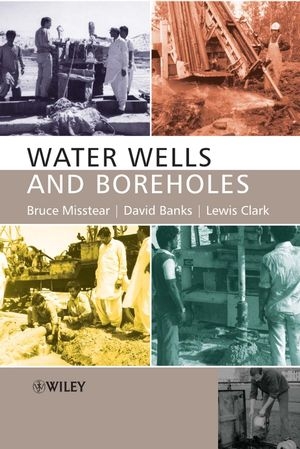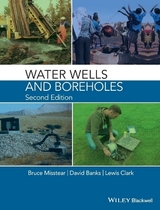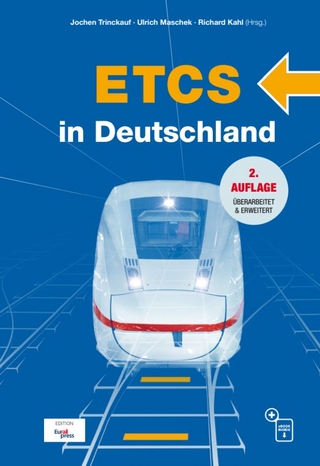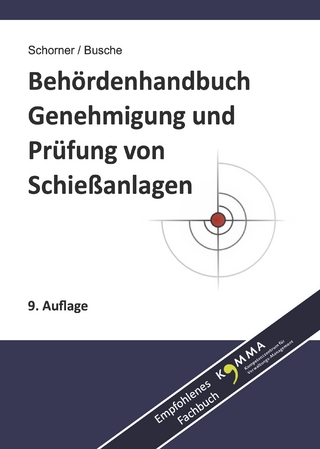
Water Wells and Boreholes
Wiley-Blackwell (Verlag)
978-0-470-84989-7 (ISBN)
- Titel erscheint in neuer Auflage
- Artikel merken
Water Wells and Boreholes provides the necessary scientific background together with practical advice using global case studies, in an accessible easy to use style suitable for both postgraduates/researchers and practitioners. The book begins with an introduction to the type and uses of water wells from water supply and irrigation through to groundwater remediation. It then covers well siting detailing how to source data from geophysical surveys, remote sensing etc. Well design is then summarised to ensure the well is stable and cost-effective. The book ends with three chapters covering well construction, well testing and well performance, maintenance and rehabilitation.
Between them, the three authors (Bruce Misstear, David Banks, Lewis Clark)have worked extensively on groundwater projects in Europe, Africa, Middle East and Asia, and this international experience is reflected in the text and illustrations of this new book on Water Wells and Boreholes. Regarding previous publications, in brief, the three authors have "published widely on issues ranging from well design and testing, to the hydrogeology of hard-rock aquifers, to groundwater contamination investigation".
Preface. Lewis Clark (1937-2004): an appreciation. Acknowledgements. Chapter 1 Introduction. 1.1 Wells and boreholes. 1.2 Groundwater occurrence. 1.3 Groundwater flow. Chapter 2 Groundwater investigations for locating well sites. 2.1 Desk studies. 2.2 Field reconnaissance. 2.3 Well survey. 2.4 Geophysical surveys. 2.5 Drilling investigations. 2.6 Groundwater resources assessment. 2.7 Groundwater quality. 2.8 Pollution risk assessment and prevention. 2.9 Planning the well scheme. Chapter 3 An introduction to well and borehole design. 3.1 Drilled wells. 3.2 Hand-dug wells. 3.3 Infiltration galleries. 3.4 Radial collector wells. 3.5 Observation boreholes. 3.6 Exploration boreholes. 3.7 Pump selection. Chapter 4 Specific issues in well and borehole design. 4.1 Choice of construction materials. 4.2 Casing. 4.3 Screen. 4.4 Gravel pack design. 4.5 Hydraulic design. 4.6 Economic optimisation of well design. Chapter 5 Well and borehole construction. 5.1 Percussion drilling. 5.2 Rotary drilling. 5.3 Auger drilling. 5.4 Jetting. 5.5 Driving of Well-Points. 5.6 Manual construction. 5.7 Well development. 5.8 Wellhead completion. Chapter 6 Formation sampling and identification. 6.1 Observing the drilling process. 6.2 Collecting formation samples. 6.3 Description and analysis of drilling samples. 6.4 Downhole geophysical logging. 6.5 Downhole geophysical imaging. 6.6 Preparing a composite well log. Chapter 7 Well and borehole testing. 7.1 Objectives of test pumping. 7.2 Planning a well pumping test. 7.3 Types of pumping test. 7.4 Analysis of test pumping data from single wells. 7.5 Multiple wells. 7.6 The shape of the yield-drawdown curve: Deviations from the ideal response. 7.7 Interpretation of pumping and recovery test data in hard-rock aquifers. 7.8 Single borehole tests: slug tests. 7.9 Test pumping a major well field: the Gatehampton case study. 7.10 Record-Keeping. Chapter 8 Groundwater sampling and analysis. 8.1 Water quality parameters and sampling objectives. 8.2 Field determinations. 8.3 Collecting water samples from production wells. 8.4 Collecting water samples from observation boreholes. 8.5 Sample filtration, preservation and packaging. 8.6 Packing and labelling samples. 8.7 Quality control and record keeping. 8.8 Sample analysis. Chapter 9 Well monitoring and maintenance. 9.1 Factors affecting well system performance. 9.2 Monitoring well system performance. 9.3 Well maintenance and rehabilitation measures. 9.4 Well decommissioning. Chapter 10 Well and borehole records. 10.1 Well Archives. 10.2 Operational well databases. Appendix 1 Units and conversion tables. Appendix 1. Units and conversion tables. Appendix 2. World Health Organization drinking water guidelines. Appendix 3. FAO Irrigation water quality guidelines. References. Index.
| Erscheint lt. Verlag | 4.12.2006 |
|---|---|
| Zusatzinfo | Illustrations |
| Verlagsort | Hoboken |
| Sprache | englisch |
| Maße | 180 x 255 mm |
| Gewicht | 1084 g |
| Einbandart | gebunden |
| Themenwelt | Naturwissenschaften ► Geowissenschaften |
| Technik ► Bauwesen | |
| ISBN-10 | 0-470-84989-4 / 0470849894 |
| ISBN-13 | 978-0-470-84989-7 / 9780470849897 |
| Zustand | Neuware |
| Informationen gemäß Produktsicherheitsverordnung (GPSR) | |
| Haben Sie eine Frage zum Produkt? |
aus dem Bereich



